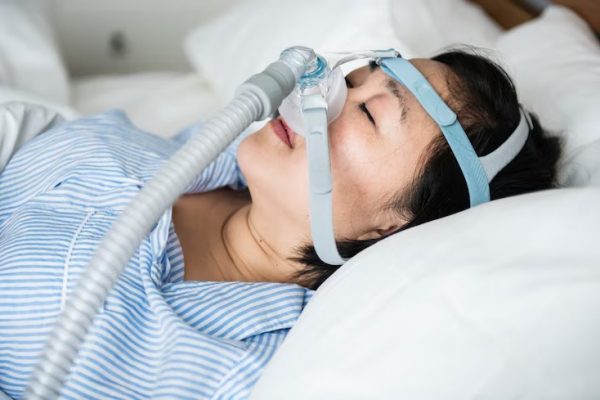Sleep apnea often gets brushed off as just snoring or tossing and turning at night. But if you’ve ever tried billing for it or getting a CPAP machine covered, you know it’s not that simple.
Behind the scenes, it takes more than a diagnosis. You need solid documentation, the right ICD-10 code, and a clear connection to medical necessity.
At Cadence Collaborative, we work with healthcare teams every day to navigate these details and turn complex billing into clean, efficient claims.
Whether you’re in a sleep clinic, primary care, pulmonary medicine, or DME, getting this right matters. Not just for reimbursement, but for making sure patients actually get the care they need.
Here’s how to make it happen.
First, What Is CPAP and Why Does It Matter in Billing?
CPAP stands for Continuous Positive Airway Pressure — a device that delivers mild air pressure to keep airways open during sleep. It’s considered the gold-standard treatment for obstructive sleep apnea (OSA).
From a billing perspective, CPAP isn’t just a prescription. It’s a prescribed therapy that’s often tied to very specific ICD-10 diagnosis codes, clinical documentation, sleep study results, and — in many cases — payer-specific compliance criteria.
So, you’re not just coding for a piece of equipment. You’re coding for a chronic, potentially life-threatening condition, and the medical necessity for an intervention.
ICD-10 Codes for Sleep Apnea: The Ones You Need to Know
Here are the most common ICD-10 codes related to sleep apnea that are often used in conjunction with CPAP therapy:
- G47.33 – Obstructive sleep apnea (adult or pediatric)
- G47.30 – Sleep apnea, unspecified
- G47.31 – Central sleep apnea
- G47.37 – Central sleep apnea in conditions classified elsewhere
- G47.39 – Other sleep apnea
Each of these codes tells a slightly different clinical story — and yes, it matters.
If you’re prescribing CPAP, the most commonly used diagnosis is G47.33. But that code must be supported by a sleep study and clear documentation from the provider outlining symptoms, severity, and rationale for treatment.
Choosing the Right ICD-10 Code: Don’t Guess
It might be tempting to just default to G47.30 (unspecified sleep apnea), especially if documentation is vague or incomplete.
But here’s the problem — most payers want to see G47.33 for CPAP coverage. Unspecified codes often lead to delays, denials, or requests for additional records. And in some cases, it could affect whether a CPAP machine is approved at all.
If you’re not sure which type of sleep apnea the patient has, it’s time to go back to the chart or the sleep study, not just fill in the blank with “unspecified.”
How ICD-10 Codes Connect to CPAP Authorization and DME Billing
Here’s where things get real. It’s not enough to just throw code on a chart and expect a CPAP machine to magically get covered. Durable medical equipment (DME) billing is one of the most heavily scrutinized areas in healthcare, and sleep apnea is right in the middle of it.
If you want your CPAP claims to go through cleanly, your ICD-10 coding needs to check all the right boxes.
CPAP Isn’t Covered Without the Right Diagnosis
For a payer to approve a CPAP device, the patient must have:
- A formal diagnosis of obstructive sleep apnea (G47.33)
- Documentation of a sleep study (often a polysomnography or home sleep apnea test)
- Evidence that the condition is moderate to severe
- Clinical notes supporting the need for CPAP therapy
That means if your claim just has “G47.30 – Sleep apnea, unspecified,” and no attached documentation? You’re probably getting denied.
The DME Side: HCPCS Codes and ICD-10 Together
When billing for the CPAP machine itself or related supplies, you’ll use HCPCS codes like:
- E0601 – CPAP device
- A7030–A7039 – CPAP supplies (masks, tubing, filters, etc.)
But those codes are only payable if there’s a matching ICD-10 code that shows the patient has a medically necessary reason for needing them, and it has to be the right one.
Example:
Billing E0601 with G47.33? Perfect.
Billing it with G47.30 or nothing at all? That’s going to be a problem.
Documentation That Supports the Code
Beyond the code itself, you need clinical notes that paint the full picture:
- Symptoms (e.g. daytime sleepiness, fatigue, snoring, gasping for air)
- Sleep study results (AHI or RDI scores, REM data, oxygen desaturation)
- Treatment plan (why CPAP was chosen, patient compliance plan)
- Follow-up notes (especially if billing for continued CPAP supplies)
The more your documentation matches the narrative of the ICD-10 code, the smoother the billing process becomes — and the fewer denials you’ll deal with later.
Obstructive vs. Central Sleep Apnea: Why It Matters in ICD-10 Coding
Not all sleep apnea is created equal, and ICD-10 treats them very differently. If you’re coding for CPAP therapy, you can’t just pick the first sleep apnea code you see. You need to understand what kind of apnea the patient actually has, because only one of them is routinely treated with CPAP.
Let’s break it down.
Obstructive Sleep Apnea (G47.33): The One Linked to CPAP
This is the one most people are familiar with.
Obstructive sleep apnea (OSA) happens when the airway gets physically blocked during sleep, usually due to relaxed throat muscles, excess tissue, or anatomical issues. The person keeps trying to breathe, but the air can’t get through.
This is what CPAP is built for. The device applies continuous pressure to keep the airway open, preventing those breathing pauses.
ICD-10 code:
G47.33 – Obstructive sleep apnea (adult or pediatric)
This is the go-to code when billing for CPAP — and it’s the one payers look for on claims involving E0601 or any CPAP supplies.
Central Sleep Apnea (G47.31): A Whole Different Condition
Central sleep apnea is less common but very different. It happens when the brain doesn’t send the proper signals to the muscles that control breathing. There’s no physical blockage — it’s a neurological issue.
CPAP may not always be effective or appropriate for these patients. Treatment could involve different approaches like adaptive servo-ventilation (ASV), medications, or treating the underlying cause (like heart failure or opioid use).
ICD-10 code:
G47.31 – Central sleep apnea
This code is not typically used for standard CPAP coverage. In fact, billing CPAP with this diagnosis can lead to denials unless there’s very clear justification and often prior authorization.
What About Mixed or Complex Sleep Apnea?
Some patients have features of both types. In these cases, careful review of the sleep study and specialist input is key. You may also see:
- G47.39 – Other sleep apnea
- G47.37 – Central sleep apnea in conditions classified elsewhere
Use these only when clearly documented, and always include supporting records.
Don’t Let the Wrong Code Block Patient Care
Here’s what it comes down to:
If the patient has obstructive sleep apnea, use G47.33 — and back it up with the sleep study and clinical notes.
If the patient has central sleep apnea, be prepared to follow a different path — one that may not involve standard CPAP.
Choosing the wrong ICD-10 code not only risks denial, but it can also delay treatment for patients who are already struggling with their health and sleep quality.
Common ICD-10 Coding Mistakes That Delay CPAP Claims
Even when the diagnosis is clear and the patient is ready to start CPAP therapy, small coding missteps can lead to big delays — or even full claim denials. Here are the most common ICD-10 coding issues we see tied to CPAP, and how to fix them before they become problems.
Mistake 1: Using an Unspecified Code When the Diagnosis Is Clear
G47.30 – Sleep apnea, unspecified, might seem like a safe fallback when documentation is unclear. But most payers won’t accept it for CPAP approval, especially when the clinical record points clearly to obstructive sleep apnea.
Fix it: Always confirm the exact type of sleep apnea from the sleep study or specialist’s note. If it’s obstructive, code it as G47.33. Only use G47.30 if there’s truly no further clarification available, and be ready for a request for more information.
Mistake 2: Billing CPAP Without Matching the Diagnosis Code
This happens more than you’d think. The provider documents obstructive sleep apnea, but the DME claim for the CPAP machine gets submitted without any ICD-10 code, or with a generic one that doesn’t match the service.
Fix it: Make sure your ICD-10 code always appears on the CPAP claim — and that it aligns with the documented condition. CPAP without a diagnosis is like a prescription without a patient’s name. It won’t go far.
Mistake 3: Coding Central Sleep Apnea When the Patient Has OSA
Sometimes, sleep studies note a few central events, and someone mistakenly assumes that means central sleep apnea should be coded. But unless the provider has diagnosed it specifically — and it’s the dominant pattern — it likely shouldn’t be coded that way.
Fix it: Don’t rely on assumptions or isolated phrases from the sleep report. Look at the provider’s final diagnosis and the clinical rationale. If it’s obstructive, stick with G47.33.
Mistake 4: Incomplete Documentation That Doesn’t Support the Code
Even with the right code, claims can be denied if there’s no documentation showing why CPAP is needed. Payers often want proof of:
- A formal sleep study
- Symptoms consistent with OSA
- Severity levels (like AHI >15, or >5 with comorbidities)
- Provider recommendation for CPAP
Fix it: Standardize your documentation process. Use templates or EMR checklists that prompt providers to record key data points for OSA and CPAP justification.
Mistake 5: Missing the Link Between Diagnosis and Equipment
Sometimes, the sleep study and OSA diagnosis are on file, but the CPAP claim is sent from a different department or vendor, and the documentation never connects.
Fix it: Make sure your team, whether clinical or DME, always ties the equipment claim to the diagnosis code and supporting documents. Even if they’re not submitted together, the narrative has to be cohesive.
Final Checklist: ICD-10 Coding for CPAP in Sleep Apnea
Before you send out that claim, pause and double-check:
- Is the diagnosis clearly documented as obstructive sleep apnea?
- Did you use the correct ICD-10 code — most likely G47.33?
- Are you avoiding unspecified codes unless truly necessary?
- Is the code backed up by a formal sleep study and clinical notes?
- If billing for equipment (like E0601), is the diagnosis linked clearly?
- Does your documentation tell a cohesive story from symptoms to treatment?
If the answer is yes to all of the above, you’re setting your claim and your patient up for success.
Need Help Getting It Right?
At Cadence Collaborative, we help healthcare teams simplify complex processes like ICD-10 coding, medical billing, and CPAP-related documentation.
From getting workflows in sync to improving approvals and reducing denials, we partner with you to make sure your billing doesn’t just get submitted — it works for your patients and your bottom line.Whether you’re a clinic, a DME provider, or managing multiple locations, we’re here to make revenue cycle management clearer, cleaner, and more effective. Contact us today!






